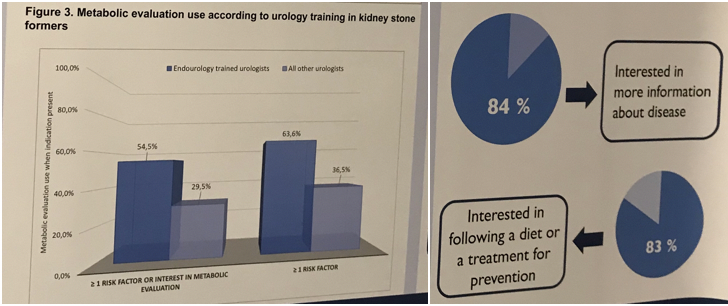To carry out this evaluation, a multi-institutional study was administered between 5 Canadian academic centers across the east, central, and west. The study consisted of a survey with 16 yes/no questions and 4 parts: identify high-risk stone formers, understanding of the disease, interest in prevention, and adequate metabolic screening. At the completion of the study, there were 530 participants with a mean age of 54.4 years. Of these patients, 45.8% were referred by in-community practicing urologists; of these, 40.0% were in an academic practice with a proportion of 14.9% endourologists.
After the study’s completion, only one-third of the participants received a metabolic evaluation. Of the physicians that prescribed metabolic evaluations (urologist, nephrologist, family doctor, or other), the relative percentage of referral was 68.9%, 15.4%, 10.4%, and 4.4%, respectively. From the data shown, there was a significant difference between the prescription of a metabolic evaluation between fellowship trained endourologists and all other urologists. Of the patients, 62% received explanations of their disease’s results and 64% understood their results. The images below highlight similar endpoints about the patients receiving evaluations.

As Bhojani concluded his speech, he scolded the current clinical urology practice by pointing out that the adherence to the AUA metabolic evaluation guidelines is suboptimal. With a reverential tone in his voice, he insisted that patients with nephrolithiasis are interested in prevention and would be highly interested in knowing more about their stone disease and/or would be interested in changing their diet or enrolling in treatment modalities to prevent recurrence.
Presented by: Sabrina Harmouch1, Hiba Abou-Haidar1, Hassan Elhawary2, Thomas Grgic3, Andrea Lantz4, Ben Chew3, Jason Lee5, Sero Andonian2, Naeem Bhojani1.
Author Information:
1. Urology, University of Montreal, Montreal, QC, Canada
2. Urology, McGill University, Montreal, QC, Canada
3. Urology, University of British Columbia, Vancouver, BC, Canada
4. Urology, Dalhousie University, Halifax, NS, Canada
5. Urology, University of Toronto, Toronto, ON, Canada
Written By: Zachary Valley Twitter: @ZacharyAValley, (Department of Urology, University of California-Irvine) medical writer for UroToday.com at the 73rd Canadian Urological Association Annual Meeting - June 23 - 26, 2018 - Halifax, Nova Scotia
Written By: Zachary Valley Twitter: @ZacharyAValley, (Department of Urology, University of California-Irvine) medical writer for UroToday.com at the 73rd Canadian Urological Association Annual Meeting - June 23 - 26, 2018 - Halifax, Nova Scotia


